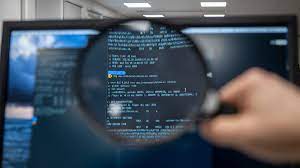Photo by Kristina Alexanderson (Internetstiftelsen) / CC by-sa
The Wayback Machine, the Internet Archive Foundation’s platform for finding lost or modified web pages, is not only a remarkable memory tool of a fast-changing web all the time: it can also be used for surveys. This is reported in a blog post from the foundation where Laura Ranca testifies. Researcher in the Berlin-based organization Tactical Tech (created just 20 years ago, this international NGO helps citizens and associations to cope with the impact of technology: see this Wikipedia article in English) and her project Exposing the invisible , Laura Ranca says to train “journalists, human rights activists, academics and ordinary citizens to use the Internet to investigate and gather evidence”.
The Challenge of Modified or Deleted Sites and Pages
“We face the challenge of intentionally modified, altered or deleted sites and web pages,” she explains. Sometimes it’s to hide something that was once published, but is no longer relevant, or perhaps now has a different connotation than it was intended. For us, it is very useful to access historical records and back up different web pages and online resources using the Wayback Machine.”
While researching environmental issues, Laura Ranca found “documents reflecting missed early warning signs. 20-year-old mining reports, video footage or other climate-related documents can be important evidence to make the case for climate action. These things need to be protected, Ranca says, and the Wayback Machine provides that security. Laura Ranca and the Expose the Invisible team run workshops on how to navigate the Wayback Machine, and train-the-trainer sessions in broader investigative skills.
She has also created guides on how to use Internet Archive content, available as open source under Creative Commons” (this nearly 100-page PDF brochure, which summarizes more detailed guides, is thus under CC license by-sa).
Constitute evidence of past confessions
Another specialist, Lili Siri Spira, testified in June, also on the Internet Archive blog, of the uses of the Wayback Machine for investigations. Head of social media and marketing campaigns at TechEquity Collaborative (a social justice association for tech employees) and co-director of Rated R (whose slogan is “Resistance, Revolution, Resilience”), this activist mentions her research on the 2019 coup in Bolivia – she used the platform to assess the state of mind of the natives through websites -, or even on companies suspected of unethical practices: some recognize it in a first time, then deny it, and being able to find in archiving web pages that they have erased makes it possible to confuse them.
Finally, as a reminder of its role as witness to the Web, at the end of 2016, in the two-month interval between the election of Donald Trump and his accession to the White House, the Internet Archive had duplicated its data in Canada to deal with possible threats to its business in the United States. Its archives of web pages were also then used by Wikipedians to repair many broken links after the major changes to the White House site that followed the arrival of the billionaire.
Read also
Alexandria Library of Software, Software Heritage Turns Five – November 28, 2021
Internet Archive: 25 years of archiving and preserving the memory of the internet – November 12, 2021
Internet Archive switches to free software to digitize 19th century books and newspapers – November 30, 2020
Vinton Cerf: The internet is losing its memory (and something needs to be done) – June 29, 2018
Read elsewhere: How to use the “Wayback Machine” tool for your next survey – May 25, 2021
